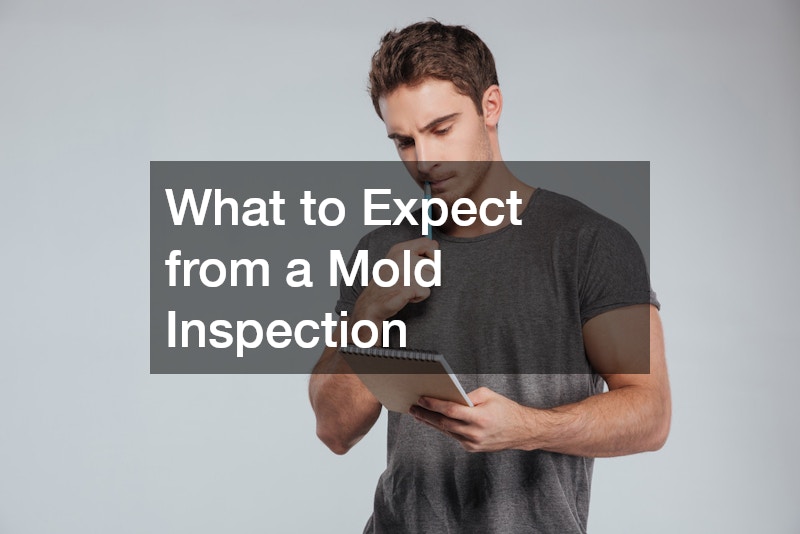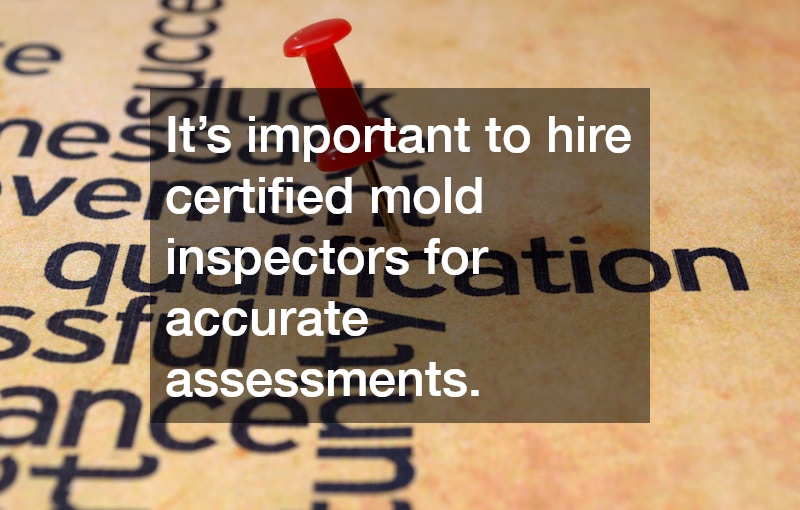

Mold removal is essential for maintaining a healthy indoor environment, as mold growth can cause structural damage and health problems, including allergies and respiratory issues. Professional services ensure mold is properly eliminated, preventing regrowth and contamination. A home inspection for mold is a smart first step if you suspect mold in your home. Inspectors evaluate areas prone to moisture, such as basements, bathrooms, and attics, and use specialized tools to detect hidden mold. Regular inspections help catch issues early before they spread.

It’s important to hire certified mold inspectors for accurate assessments. Certified professionals follow industry standards, ensuring a thorough inspection and safe remediation process. They can identify different types of mold and recommend the best course of action for removal. The cost for mold inspection varies based on the size of the property and the extent of the mold problem, typically ranging from $300 to $1,000. While this may seem like a significant investment, early detection can save homeowners from costly repairs later.
In urgent situations, emergency mold services are available to address severe infestations. These services respond quickly to remove mold and contain affected areas, minimizing further damage and safeguarding your family’s health. Call today to schedule your inspection and protect your home!

Discovering you have mold in your home can be a nightmare and may be the cause for a few health complications you’ve been having lately. These little fungi can enter your home through open doorways, windows, vents, and heating and air conditioning units; they can even travel on your clothing.
There are thousands of different species of mold, but they all have one thing in common: they love moisture. They will grow in places such as around leaks in roofs, windows, pipes, or wherever there has been recent flooding.
What to do if you have mold:
If you suspect you have mold somewhere in your house (normally found in basements or attics) or you can see extensive mold damage, you should call a professional mold removal company so they can perform a mold inspection.
Mold inspection: This inspection is used to help you and the mold remediation company determine what species of mold you have in your home. For example, do you have life-threatening toxic mold in your home, or is it just a large colony of harmless mold? The inspection will also be able to determine the amount of mold in a certain area or room by calculating mold spores per square foot.
Mold inspection process:
- Call a mold removal company and schedule a mutually convenient time for the inspection.
- Once inspection day rolls around, make sure all of the windows, doors, vents, and heating and air conditioning systems have been turned OFF. You don’t want to disturb the mold spores during this time so the mold inspectors can determine how much mold is in your home.
- Depending on how big your house is or what kind of mold inspection you’ve asked for, the process could take anywhere from 30 minutes to two hours.
- The inspectors will be looking for signs of mold damage or colony growth. Depending on how bad the infestation is, they could end up tearing down parts of your dry wall to see if mold has made its way into your home’s pipes.
- The inspector will take samples of the mold spores and will either send it to a lab for testing or they will conduct their own on-the-go test. Or they will recommend DIY remediation steps.
- After the lab tests return with details, the mold inspector will give you a final mold inspection report to review. Depending on what the report says, you can either accept or decline the offer to remediate the mold.
Be wary of a “free mold inspection” from some mold companies; they may end up costing you more than you think by convincing you that you need to have the mold removed immediately when the problem may not be as extensive as it sounds.
However, mold can cause health problems ranging from itchy eyes, sneezing, coughing, serious allergic reactions, to asthma and permanent lung damage, so consider remediation when recommended. Find out more at this site.




